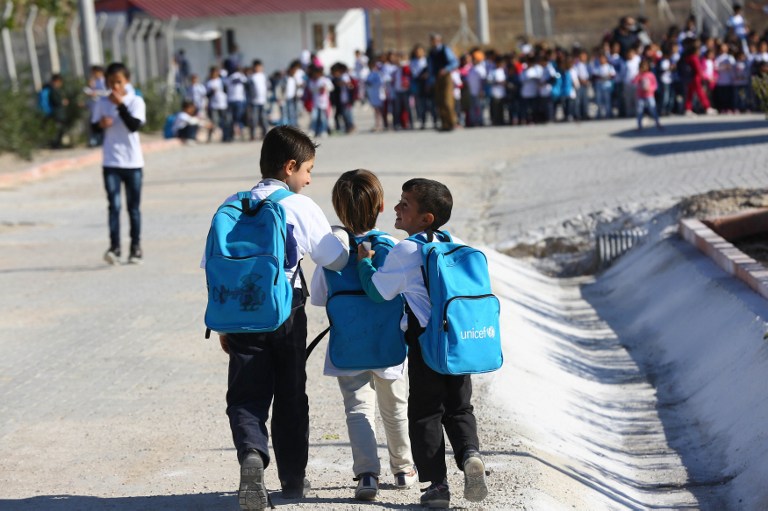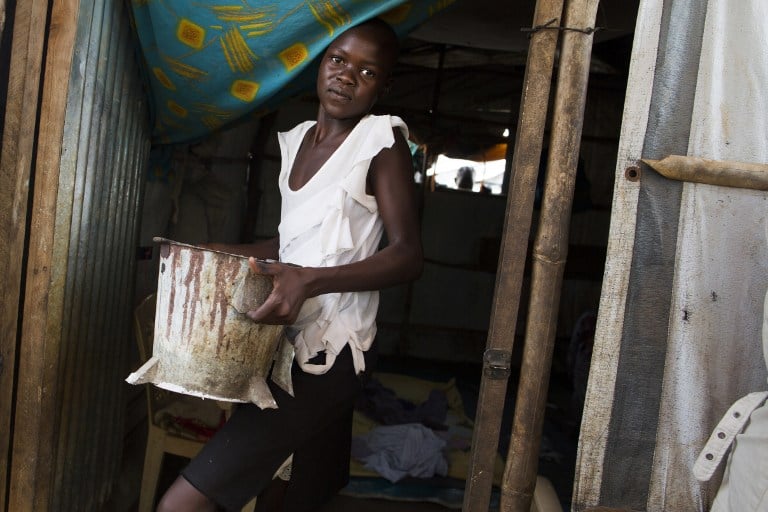The new head of the U.S. Agency for International Development Gayle Smith gave policymakers a first look at her vision of what USAID should be doing. In a speech on Capitol Hill in Washington D.C., she listed a number of fronts where America’s foreign assistance has helped lead to global progress, from curtailing the spread of HIV/AIDS to reducing extreme poverty.
Smith also mentioned successes in education.
"I think everyone in the room knows that this is a moment of extraordinary progress," Smith said. "Over the last 30 years, extreme poverty has been cut in half. Boys and girls are enrolling in primary school at nearly equal rates, and there are half as many children out of school today as there were 15 years ago."
We wanted to fact-check Smith’s claim about how many children are out of school.
'A sort of statistical glide'

For the record, the first part of Smith’s statement about boys and girls enrolling at equal rates is largely on the money.
According to the World Bank, most parts of the world are at or close to parity in terms of seeing equal percentages of girls and boys who go to school. The two regions that lag behind are Sub-Saharan Africa and Oceania, but the gap is not enormous and they have made a lot of progress since 2000.
Now, are there half as many children out of school today as there were 15 years ago?
Spokesman for USAID, Benjamin Edwards, told us that Smith’s source was the United Nations 2015 Millennium Development Goals report. In the section on education, it says: "Currently, 57 million children of primary school age are estimated to be out of school, down from 100 million in 2000." And in a list of bullet points, the report says the number has "fallen by almost half".
We note that if you do the math, the actual estimated decline is 43%.
So what we have is a sort of statistical glide. The writers of a UN report massaged 43% to make it "almost half," then someone at USAID moved things a bit further by dropping the qualifier "almost" and Smith ends up saying "there are half as many children out of school".
Current trends could be negative
This might not matter, except there’s reason to question the underlying estimate in that UN report. In fact, while the gains since 2000 are significant, current trends could be negative, not positive.
The United Nations Educational, Scientific and Cultural Organization, better known as UNESCO, is the keeper of the original data. The most recent information goes only to 2013. Based on UNESCO's actual figures, the number of out-of-school children fell by 40% from 2000 to 2013, as we can see in this table:
| 2000 | 2013 | Change 2000-13 | |
| World | 98,654,408 | 59,256,395 | 40% |
| Caucasus and Central Asia | 358,127 | 342,111 | 4% |
| Latin America & the Caribbean | 3,330,636 | 4,066,213 | -22% |
| Northern Africa | 1,935,001 | 232,304 | 88% |
| Sub-Saharan Africa | 42,873,204 | 32,960,434 | 23% |
| Western Asia | 3,039,656 | 2,045,168 | 33% |
| Eastern Asia | 5,924,921 | 2,680,949 | 55% |
| South-Eastern Asia | 4,745,734 | 3,636,624 | 23% |
| Southern Asia | 33,849,211 | 10,349,757 | 69% |
| Oceania | 330,316 | 188,308 | 43% |
So based on hard data, the gains look less and less like "about half."
On top of that, in its 2015 report on out-of-school children, UNESCO flagged that there has been largely no progress since 2007. That year, about 60 million young children were not in school. And the agency warned that the situation could deteriorate.
"Progress has stalled and there are serious concerns that unless something changes — and fast — hard-won achievements on primary enrollment could begin to erode," the report said.
A 2015 UNESCO policy paper put the problem in starker terms. It highlighted that the number of out-of-school children has been rising since 2010. That is true for both primary and secondary school-age children.
Curiously, the writers of the UN Millennium Development Goals report had this information and posited that progress, at least globally, would continue. We looked at their statistical annex and found no explanation for this positive forecast.
Professor of education and international development at University College London, Elaine Unterhalter, told us there’s even more reason today to doubt that steady progress is underway.
"The gains are based on data before the large-scale refugee crisis engulfing Syria and Iraq, and the internal displacement in Nigeria and Sudan," Unterhalter said. "So, while definitely there are gains, we must be cautious about over-claiming."
Uneven gains and stalled progress

While Smith’s figure is a bit high and runs counter to the trends since 2010, a further flaw is that it masks enormous regional variation.
Southern Asia, which includes India, drove down the number of out-of-school children by nearly 70%. Northern Africa, reaching from Morocco to Egypt, had far fewer children to educate but saw nearly a 90% decrease in those that were not in school.
Those gains stand in sharp contrast to the numbers for Latin America and the Caribbean where the problem grew worse, not better. In sub-Saharan Africa with the largest number of young children, the decline was only about 25%.
Sub-Saharan Africa faces a particular challenge. It is a region where the rising population of school-age children is rapidly outstripping the capacity of governments to expand their education systems.
In its 2015 report, UNESCO said that decreases in just 11 nations accounted for over half of the global decline. Nicole Bella, a senior policy analyst at UNESCO, told us a key factor in those gains was pretty basic -- money.
"Low- and lower-middle-income countries have allocated a higher percentage of Gross National Product to education since 1999, and aid to education has more than doubled in real terms," Bella said.
Governments built more schools, hired more teachers and cut or eliminated school fees. Bella said some also started feeding students and passed laws designed to reach kids who live in poorer households. She noted that the poorest children are "four times more likely not to go to school than the richest children, and five times more likely not to complete primary school".
But Bella told us that government efforts to get more children into school have slowed. Unterhalter said that there’s no simple solution to dealing with the remaining out-of-school children. The issues are many, and so a wide range of strategies would need to be brought to bear.
Major hurdles
The UNESCO study found that the single greatest reason why children aren’t in school when they should be is war and other forms of armed conflict. Fighting destroys schools, scatters students and teachers, and often draws teenagers directly into the conflict as fighters themselves.
Following the impact of war on schooling, the report cites "entrenched gender roles" that systematically reduce the opportunities for girls to go to school in the first place, or to remain in school if they start.
The demand for child labor, and the family’s need for a child to work, also diverts children from an education.
One of the original Millennium Development Goals was to ensure that every child would be able to complete primary school. That goal has not been met and according to UNESCO, there is a real risk it will slide further out of reach.
Conclusion: Based on hard data, the actual decline is about 40%
Smith said that there are half as many primary-age children out of school today as there were 15 years ago. That’s a bit high.
Smith took the words in a UN report that described the gains as "almost half" and dropped the qualifier. That would be a minor issue except the UN language itself was based on a projection that runs counter to the findings of the UN’s main agency on education, UNESCO.
Based on hard data, the actual number is about 40%, and most importantly, the trend since 2010 is negative. We also note that the global figure masks large regional differences where progress has been absent or much more limited.
Politifact rated the claim "half true" as it is partially accurate but leaves out important details. See how it appeared there.


Add new comment